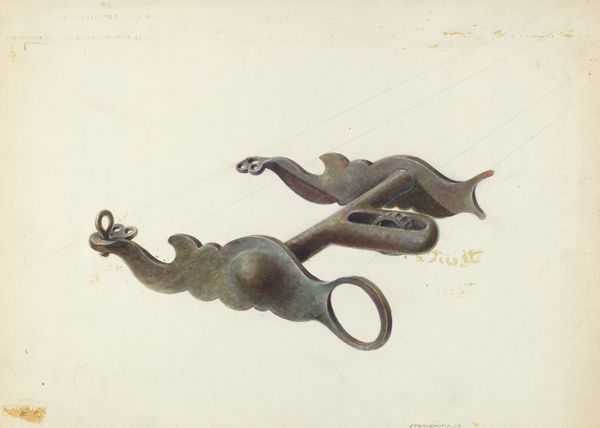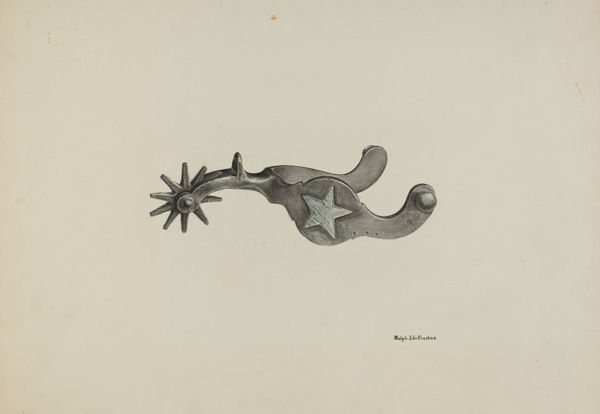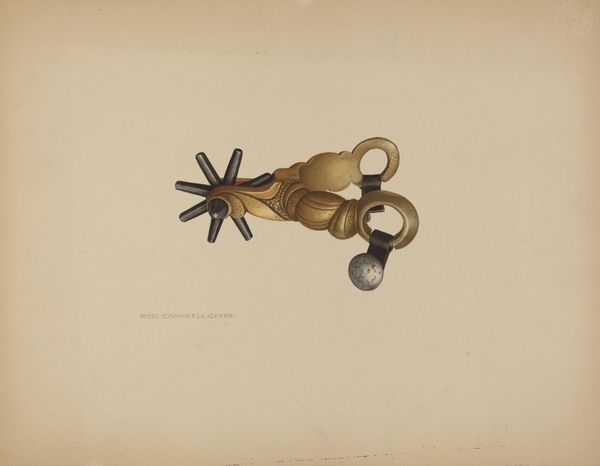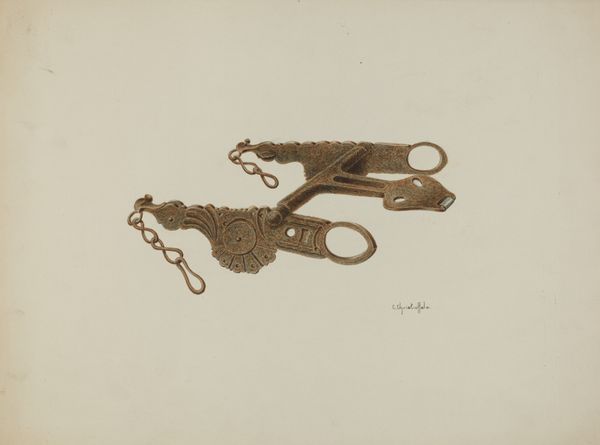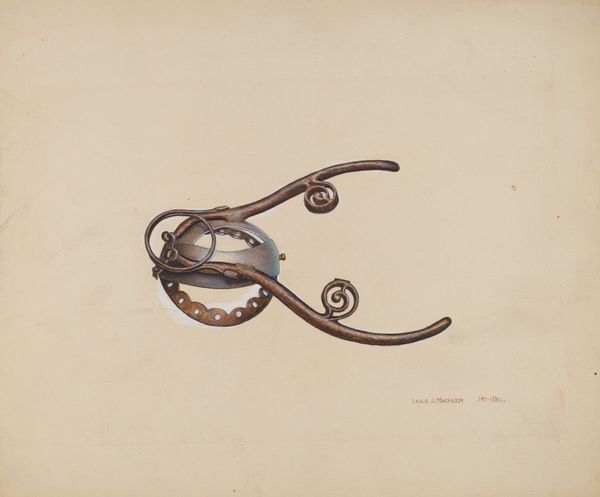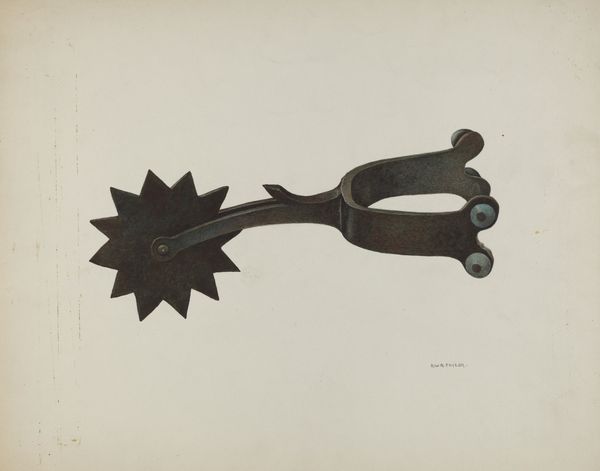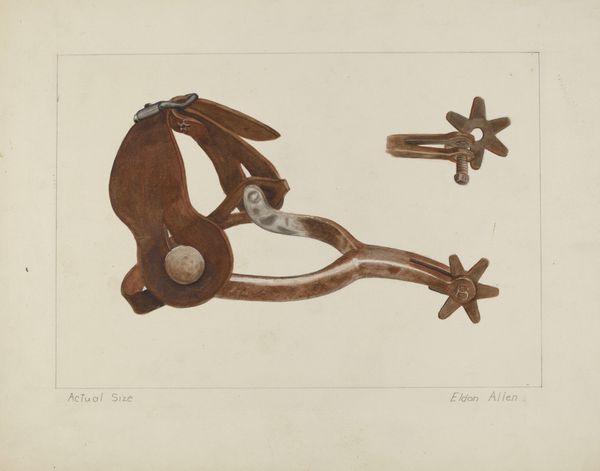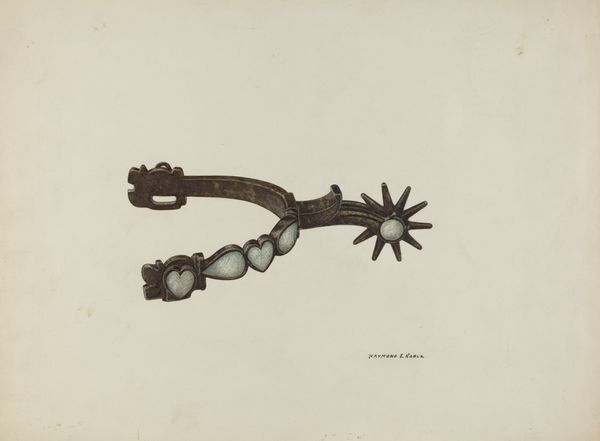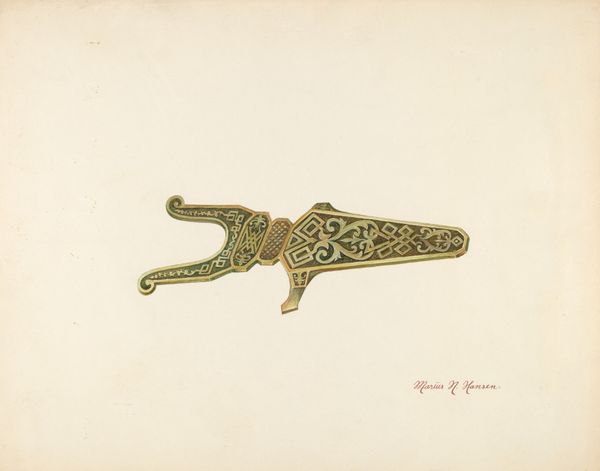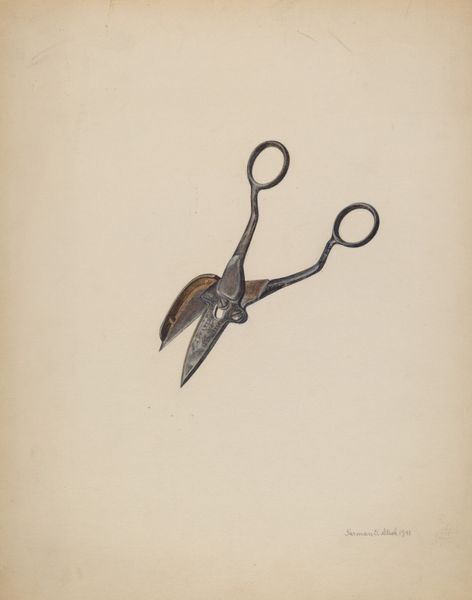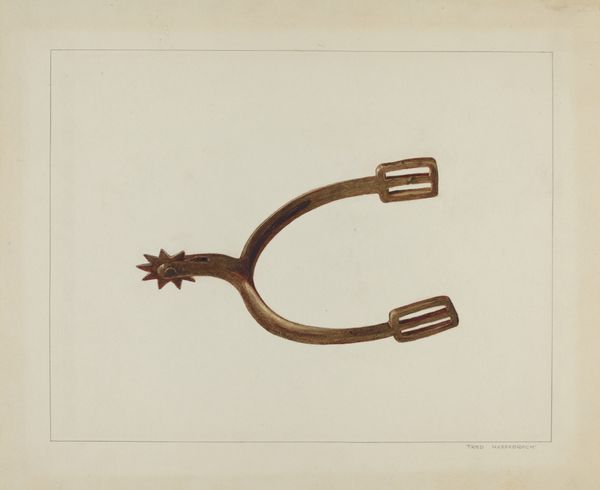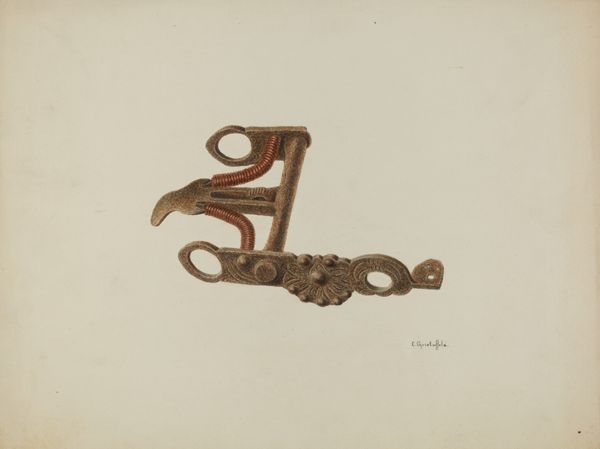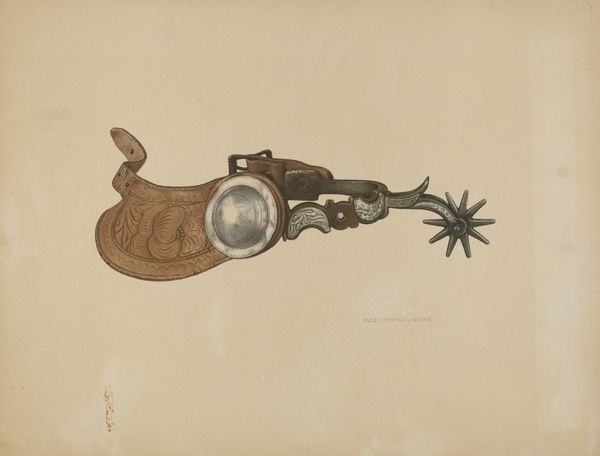
drawing, metal, pencil
#
drawing
#
metal
#
pencil drawing
#
pencil
Dimensions: overall: 26.8 x 35.7 cm (10 9/16 x 14 1/16 in.)
Copyright: National Gallery of Art: CC0 1.0
Curator: So, here we have Cornelius Christoffels' "Wrought Iron Bit," a pencil drawing crafted sometime between 1935 and 1942. Quite a stark, solitary image, wouldn’t you say? Editor: Immediately, it strikes me as cold and precise. There’s a metallic austerity to it, enhanced by the stark, uncluttered background. The texture seems almost palpable despite being a drawing, quite an intriguing contradiction. Curator: Exactly! The medium amplifies that tension. On one hand, the delicate pencil strokes offer a sense of handcrafted tenderness. Then you realize you’re looking at a piece of cold, hard, functional metal—made to go in the mouth of an animal! The contrast is unsettling. Editor: Indeed. Considering its function, there's an almost ornate quality in its design, the elaborate curves seem unnecessarily stylized. The object suggests control, yet the artistic rendition softens it with these playful, almost whimsical, lines. What does it suggest about how the artist perceived power dynamics? Curator: That's fascinating. Perhaps Christoffels was grappling with the inherent duality of the object itself—the power to control tempered by a recognition of inherent beauty. Or maybe he just liked horses and their trappings. Editor: (chuckles) A possibility not to be dismissed, although if one approaches this work through the lens of structuralism, one sees a deeper conversation occurring within. Curator: Semiotics of the stable, perhaps? Still, the precision is noteworthy, no? It suggests a deep familiarity. Each line appears intentionally placed. Like a topographical map, it charts a landscape of function, and aesthetics blend, a very precise vision, even a little intimidating. Editor: A detailed semiotic analysis might even unearth societal power structures related to equestrian culture! However, beyond theory, this remains a striking object. Christoffels coaxes the cold objectivity of metal into something quite evocative. Curator: True, and those delicate tonal variations he achieves with pencil truly make it sing, as it adds a haunting grace to a tool. Editor: Perhaps it's this duality of intent, the tension between function and art, that makes it memorable, like frozen music.
Comments
No comments
Be the first to comment and join the conversation on the ultimate creative platform.
